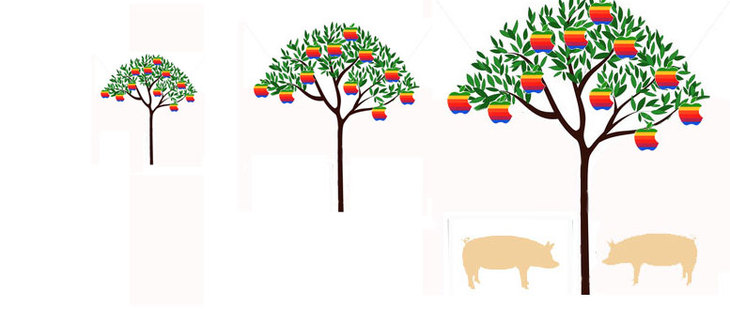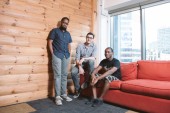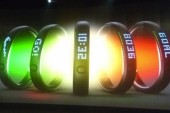
When Apple’s stock tanked six percent earlier this week on news of “mere” $6.62 billion net income for the last quarter, it was a clear sign of just how insane the hype swirling around the company has become. Thankfully, we were mostly spared a round of hyperbolic reaction, and both the company and analysts agreed the dip came because of a shift in the normal iPhone release cycle.
Nonetheless, this small, if not terribly accurate glimpse of a less than all-powerful Apple comes at an interesting time. Its rivals are now creating products like the Galaxy Nexus phone or Xbox that, surprise surprise, are beginning to approach and sometimes surpass Apple in terms of wide market appeal. And even if selling a paltry 17 million iPhones in a quarter isn’t exactly a sign of a company in trouble, the timing of Apple’s minor miss is still reason enough to speculate about the future. After all, when Apple’s dominance lessens, as it inevitably must, it will be because there’ll finally be worthy alternatives.
For years, one of the most baffling aspects of the tech world was the vast chasm in market interest between Apple and its competitors. While even casual users could see what made Apple devices compelling and easy-to-use, companies like Sony, Samsung and Google simply couldn’t adapt their business structures quickly enough to produce similarly accessible, well-designed products. Most frequently, makers of smartphones or PCs would compete on arcane specifications, glossing over the holistic approach of Apple that succeeded because its cohesive ecosystem of hardware, software and services ‘just worked’.
But it now seems the time of those wild disparities may be coming to an end–not simply in products, but mentality too. This week, when Google unveiled the latest version of its mobile operating system, it said it was not only concerned with functionality, but the emotional connection to the Android.
“We wanted to focus our effort on making people feel more amazing, like they’re super-powered. You put on your suit of techno-magical armor and now you can fly and shoot the bad guys. We want our products to make them more empowered,” said Matias Duarte, the head of Android’s user experience team. This aim is helped by the fact that Android has or will soon have ways for consumers to purchase movies, music and books. If for too long, tech companies haven’t understood that user experience is paramount, they’re getting it now.
Yet it isn’t just parity that Apple’s competitors are striving for. Pushed to the margins of our minds for years, it is now Microsoft who is leading the way in design of all things. You may have noticed, for example, that in recent years Apple has tended to design digital things to seem like their real-life counterparts, whether the brushed metal look in OS X or the leather book feel to the Calendar or Find My Friends apps–phenomena that in the design biz are called skeuomorphs. They tend to be familiar, but often ungainly and unattractive, in part because they eschew the nature of the medium they appear upon.
In contrast, Microsoft’s relatively new Metro interface that is found now on its phones and will soon appear on the Xbox and next version of Windows is purely digital–and, shock of shocks, is also prettier and smarter looking than Apple’s mobile approach. Imagine typing that sentence a few years ago. It would have sounded insane. Yet now, a company once known for boring practicality is now leading the pack with its aesthetic choices, showing the rest of the tech world how a digital interface should work.
When Steve Jobs retired from Apple, I said that his legacy was to be found in the way Apple’s commitment to design, ease of use and quality would trickle down–and up and sideways–to other tech companies. But rather than only a kind of “osmosis of ethos,” Apple’s main rivals are actually competing in novel, unexpected ways, and even occasionally outclassing the gang at Cupertino. At the same time, Apple hasn’t had to lose at all for all this to happen. Which is to say that, even though Apple’s missed earnings were barely a miss at all, they were an unintentional symbol: of the fact that Apple is no longer alone in leading the charge–and that the tech world is better off for it.
__
Navneet Alang is the Tech Critic for the Toronto Standard.














